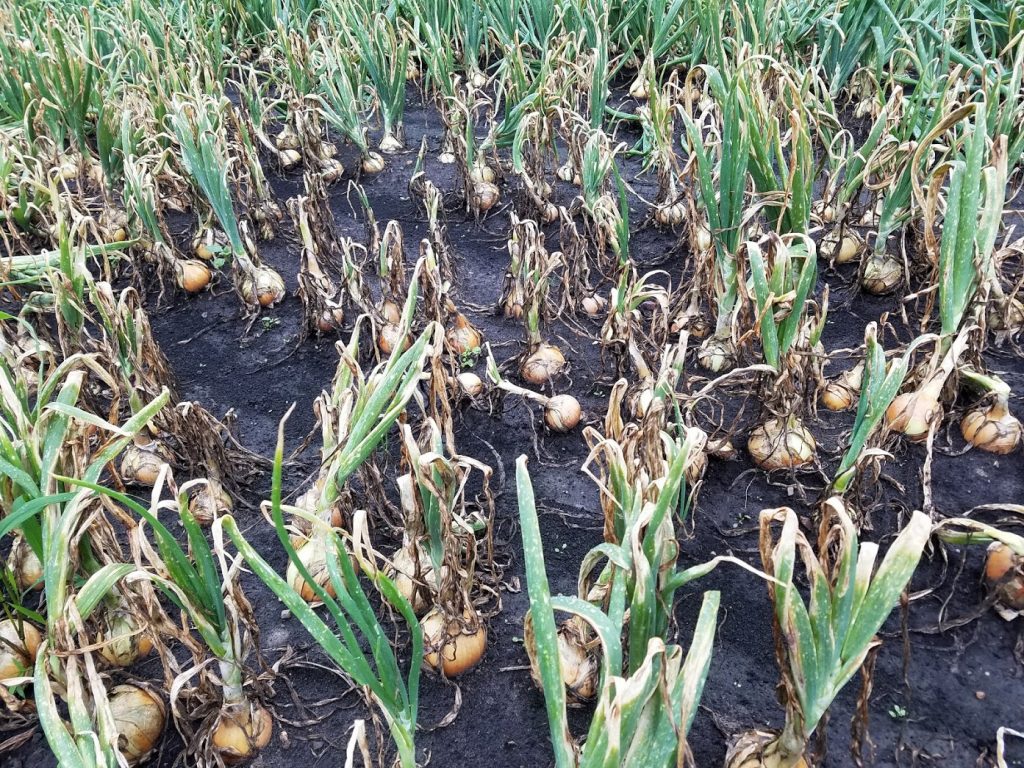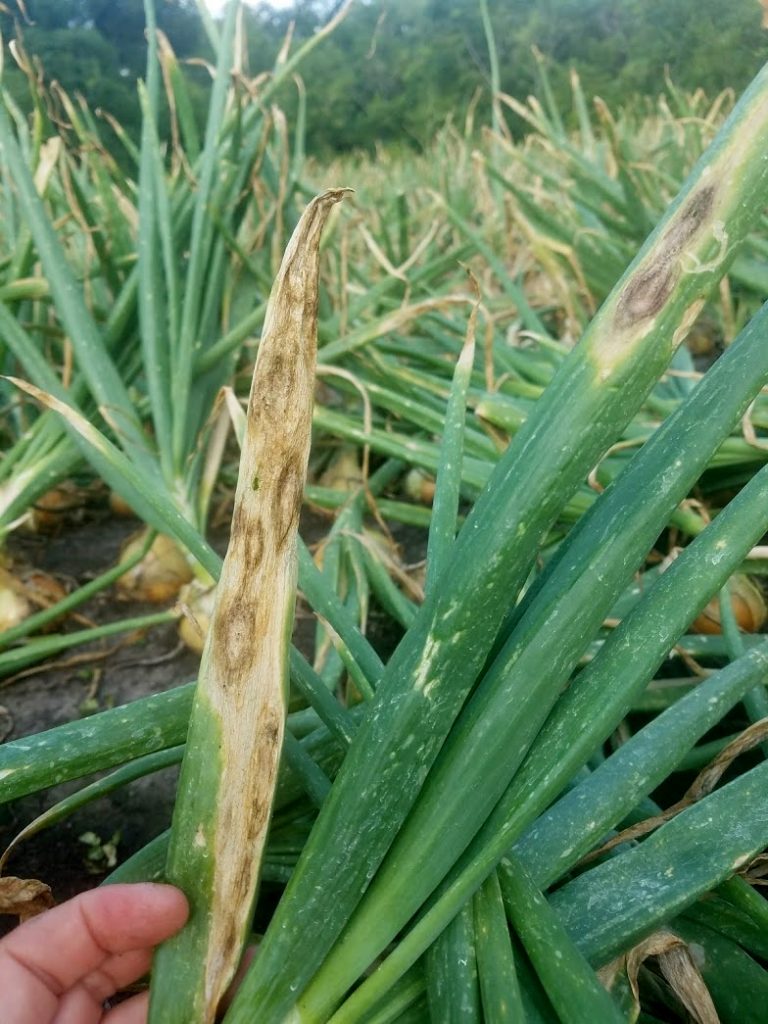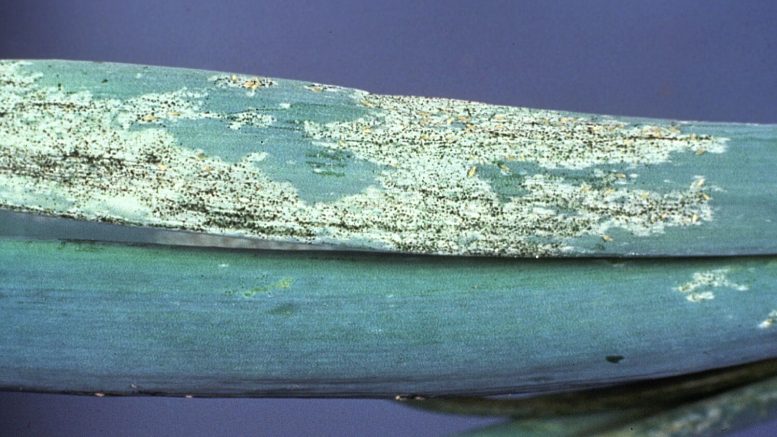The onion industry has identified the most challenging insect pest and foliar disease facing organic onion production in the Great Lakes region. Now researchers are working to pinpoint the best solutions to the problems.
Onion thrips, Thrips tabaci, has been prioritized as the most serious pest in both conventional and organic onion production in the region. Thrips feeding damages onion foliage and reduces the number of bulbs reaching the more valuable marketable sizes. Onion thrips also transmit pathogens such as Iris yellow spot virus (IYSV) and some that cause bacterial bulb rots.
Thrips damage also may create additional entry points that facilitate infection by Stemphylium vesicarium, which causes Stemphylium leaf blight (SLB). SLB has recently emerged as the most serious foliar disease of onion in the Great Lakes region. SLB damages foliage that may reduce the size of marketable bulbs. SLB also may kill plants prematurely and can result in reduced yield and bulb quality.
A group of researchers led by Cornell University entomologist Brian Nault recently landed a USDA-NIFA Organic Agriculture Research and Extension Initiative grant. The $837,000 grant will fund a three-year project, which began Oct. 1. The work involves entomologists, plant pathologists and a plant breeder.
The long-term goal of the project is to ensure the sustainability and profitability of organic onion production in the Great Lakes. To get there, the research team intends to develop and implement an integrated pest management (IPM) program for thrips and SLB that is based on a combination of host plant resistance and crop protectants approved by the Organic Materials Review Institute (OMRI).
The team has already identified some promising OMRI-approved crop protectants that may significantly reduce damage by onion thrips and SLB, according to Nault. They have also previously demonstrated that onions with unique epicuticular-wax profiles, which are characterized as having “semi-glossy” foliage, have less thrips damage, and these selections may be less vulnerable to SLB.
Next steps include evaluating OMRI-approved crop protectants in combination with thrips-resistant onions to manage thrips and SLB, and demonstrating an IPM strategy in participating organic growers’ fields. The researchers also plan to develop web-based resources to help other producers implement the IPM program. In addition, they hope to develop and release new early-maturing, multiple-pest-resistant onion cultivars for organic growers.

Stemphylium leaf blight can kill plants prematurely and result in reduced yields and bulb quality.
Photo courtesy Christy Hoepting, Cornell Cooperative Extension

Stemphylium leaf blight appears as elongated, boat-shaped, tan, purple or black lesions.
Photo courtesy Christy Hoepting, Cornell Cooperative Extension


